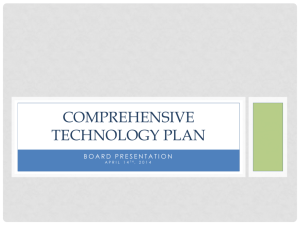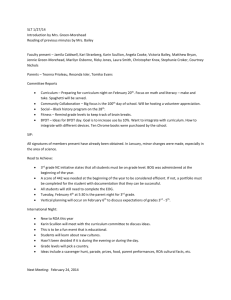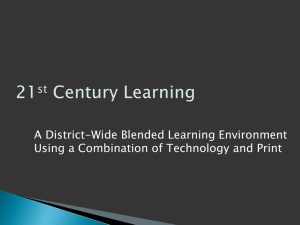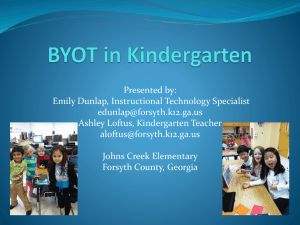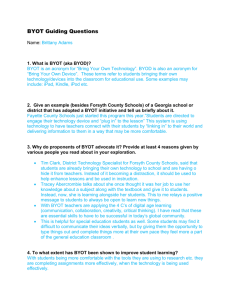Before beginning planning work for the NC Education Cloud initiative,... team conducted site interviews and technology systems inventories (in the... The Status of “Bring Your Own Technology” Initiatives
advertisement
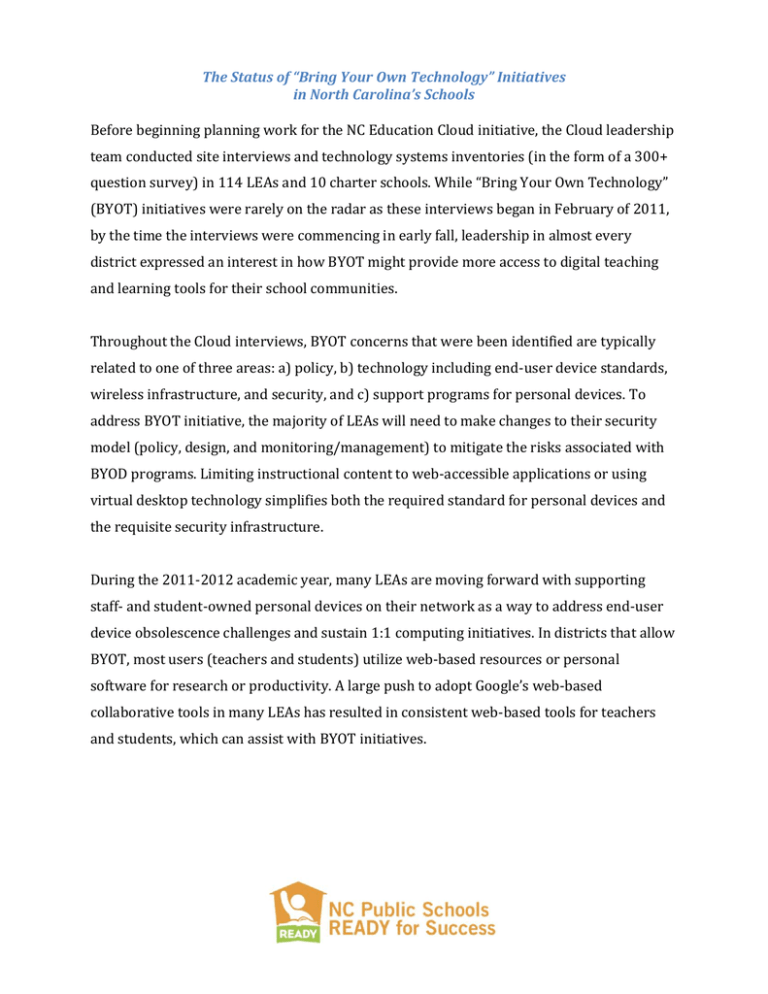
The Status of “Bring Your Own Technology” Initiatives in North Carolina’s Schools Before beginning planning work for the NC Education Cloud initiative, the Cloud leadership team conducted site interviews and technology systems inventories (in the form of a 300+ question survey) in 114 LEAs and 10 charter schools. While “Bring Your Own Technology” (BYOT) initiatives were rarely on the radar as these interviews began in February of 2011, by the time the interviews were commencing in early fall, leadership in almost every district expressed an interest in how BYOT might provide more access to digital teaching and learning tools for their school communities. Throughout the Cloud interviews, BYOT concerns that were been identified are typically related to one of three areas: a) policy, b) technology including end-user device standards, wireless infrastructure, and security, and c) support programs for personal devices. To address BYOT initiative, the majority of LEAs will need to make changes to their security model (policy, design, and monitoring/management) to mitigate the risks associated with BYOD programs. Limiting instructional content to web-accessible applications or using virtual desktop technology simplifies both the required standard for personal devices and the requisite security infrastructure. During the 2011-2012 academic year, many LEAs are moving forward with supporting staff- and student-owned personal devices on their network as a way to address end-user device obsolescence challenges and sustain 1:1 computing initiatives. In districts that allow BYOT, most users (teachers and students) utilize web-based resources or personal software for research or productivity. A large push to adopt Google’s web-based collaborative tools in many LEAs has resulted in consistent web-based tools for teachers and students, which can assist with BYOT initiatives. Many LEAs have also adopted new policies, or amended current ones, to support BYOT initiatives. By and large, technology needs are the largest speed bumps holding back many LEAs from beginning successful BYOT initiatives. Part of the NC Education Cloud Enterprise Services planning effort, MCNC is currently drafting a white paper which will provide guidance for supporting personal devices on LEA Networks. While this white paper encompasses more than enterprise and support tools that will be needed for successful BYOT implementations, basic and advanced infrastructure needs are as follows: Fundamental Needs LAN Layer 2/3 Managed Switches Wireless LAN Access Points and Controllers Firewall/Security Appliance Web Filter RADIUS Server Directory Services Certificate Authority Monitoring tools, e.g. syslog server Advanced Needs Intrusion Prevention System (IPS) Network Access Control (NAC) Mobile Device Management (MDM) Virtual Desktop Infrastructure (VDI) Many NC LEAs are endeavoring to support BYOT initiatives. While some have chosen to pilot initiatives in single schools, others have chosen to embrace the initiative district-wide. Below is a list of example districts. This list is not all-inclusive. For more information on district initiatives, send an email request to Technology_Ready@dpi.nc.gov. Carteret County Schools Catawba County Schools Chapel Hill-Carrboro City Schools Hoke County Schools Onslow County Schools Wilson County Schools
